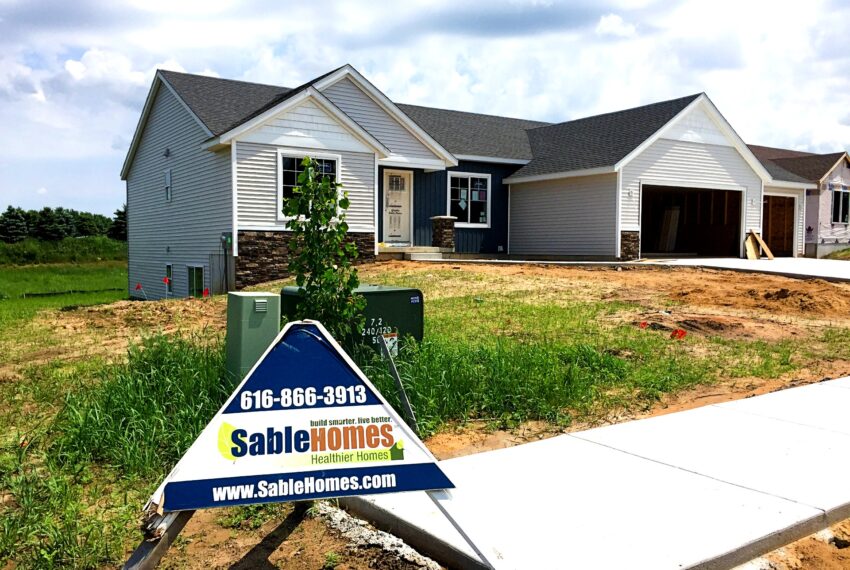
Crain’s Grand Rapids Business: Housing shortage made worse by ‘NIMBY syndrome’
In a January 2024 op-ed published in Crain’s Grand Rapids Business, Sable Homes President John Bitely details the need for West Michigan residents and business leaders to be part of the bigger solution for the region’s housing shortage and join efforts with the Home Builders Association of Michigan, or by supporting the work of Housing Next through the Grand Rapids Chamber Foundation. Read his op-ed below:
It is no surprise that West Michigan has a housing crisis. We hear about it almost daily, whether from The Right Place’s Economic Outlook for 2024; the Grand Rapids Chamber of Commerce’s support for housing; Housing Next; the initiative being spearheaded by the Allegan County Community Foundation to increase accessible, appropriate, and affordable housing across the county; or the United Way of Montcalm — Ionia Counties’ recent Community Leaders Conference on Housing — they all are working to address the shortage of workforce housing.
Though I applaud each of these groups for their work in this space, we still need to address the elephant in the room, which has been simmering for years and has now come to a boil with the increased interest rates.
Housing Next’s recent study shows continued increases in demand totaling a need for 50,000 new housing units needed by 2027 to keep up with the population growth in Kent and Ottawa counties. Allegan County’s assessment, which was recently completed, shows a 6,200-unit gap in housing for the same period. And in Montcalm and Ionia counties there is a deficit of new homes too.
We hear about how interest rates are affecting housing sales, most of which has to do with existing supply not coming onto the market because homeowners are reluctant to sell homes that have some of the lowest mortgage rates in history. But, even if an influx of existing homes were to come online, that still would not be enough inventory to address the crisis at hand.
Our state government is authorizing subsidies to help lower costs associated with rent, but at the same time are adding codes that increase home prices. According to the National Association of Home Builders, regulations imposed by all levels of government account for $93,870, or 23.8% of the current average sales prices ($397,300) of a new single-family home. Of the $93,870, $41,330 of that is attributable to regulation during development, and $52,540 is due to regulation during construction.
And what may even be the icing on the cake is the vocal “Not in My Back Yard” individuals, who thwart new housing construction.
I’d like to dissect the issue at hand. In recent years several projects that could have created housing in the region have fallen victim to the NIMBY syndrome. From Sparta Township to Alpine Township and in the city of Walker and beyond, projects have come to screeching halts after millions of dollars have been spent in purchasing land rights, paying for engineering/environmental studies, and local municipality permitting fees. By my count throughout the last three years, over 1,000 single-family homesites have not seen the light of day due to vocal groups placing approved developments on a referendum vote, or by local government bodies being pressured to deny site plans for these housing developments.
We all know there is a housing shortage, and I have spent my 30-year career focusing on attainable/workforce housing. We often work through the burdensome regulations forced upon us during the development phase, including larger lot sizes, requirements for infrastructure like sidewalks and curbs, open spaces, and others, to later be denied because individuals do not believe the development should be near them.
I am asking our business leaders in West Michigan, who by all measures acknowledge that there is a housing shortage, to help become part of the bigger solution and join efforts with the Home Builders Association of Michigan, or by supporting the work of Housing Next through the Grand Rapids Chamber Foundation. By doing so, you will join the voices of the local builders who can help build West Michigan out of the current shortage of single-family homes. More importantly, I hope more individuals who see the need for housing in the region become involved in their local government planning commissions, zoning board of appeals, or city/township boards and commissions. It’s time that we stop talking about the problem, and instead come together to stop the issues that are creating the crisis at hand.
Read the full op-ed, here.

